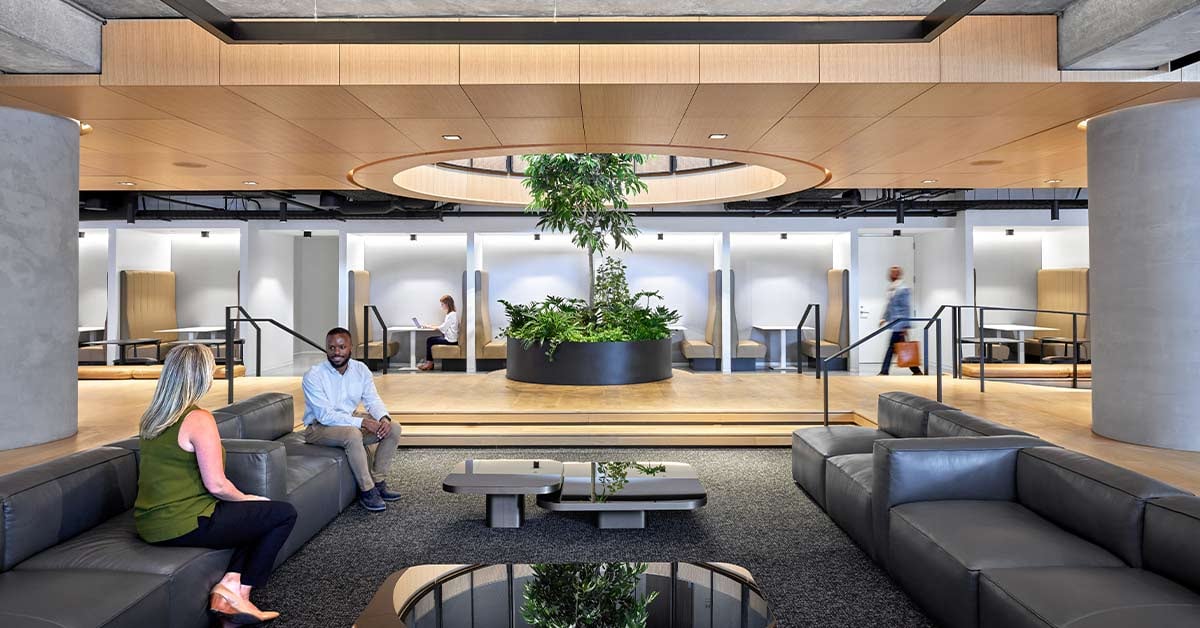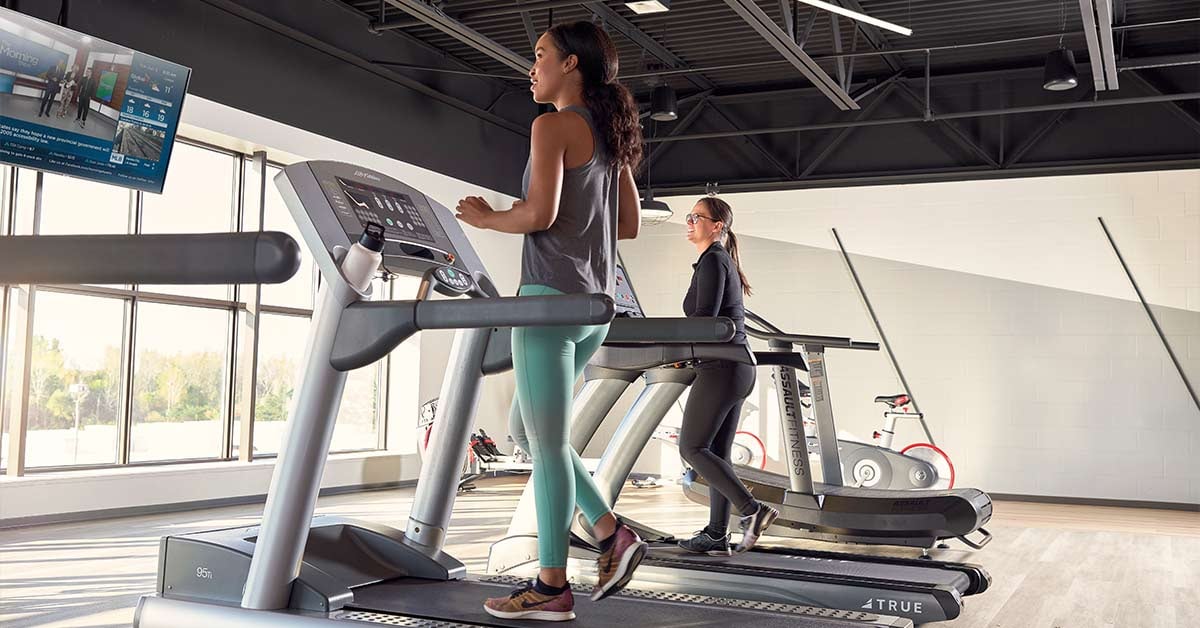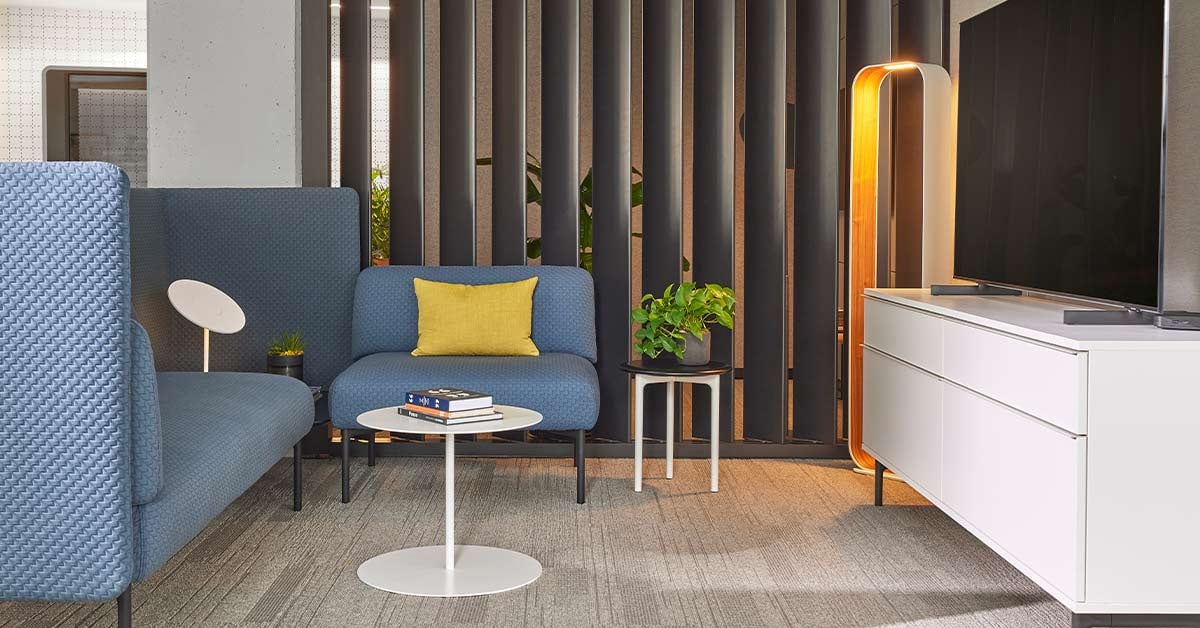As organizations strive to retain top talent amidst a competitive landscape, the overlooked role of office design moves to the forefront. A well-thought-out office layout is not merely a space for employees to work, but a strategic tool to foster engagement, motivation, and ultimately, reduce employee turnover.
According to the Kastle Back to Work Barometer, the 10-city average occupancy was 51.1% as of December 18, 2023. This was up from 39.2% in November 2023 and indicates a rising trend since the beginning of the pandemic. The workplace is once again becoming a destination of choice for employees. As organizations look towards retaining top talent, creating an inviting and engaging office environment can make all the difference.
Here, we explore how innovative office design, when aligned with employee needs, expectations, and company culture, can serve as a catalyst for creating a work environment that stimulates creativity, enhances productivity, and strengthens employees' commitment to the organization.

Making Your Workplace the Destination of Choice
"Making your workplace the destination of choice" refers to the concept of designing and managing your office space in a way that becomes an appealing location for your employees to spend their working hours. This involves creating an environment that not only meets their professional requirements but also offers a comfortable, supportive, and stimulating atmosphere. It's about making the office more than just a place of work - transforming it into a destination where employees feel valued, are motivated to contribute their best, and choose to be, rather than feeling obligated to be. It encompasses a range of aspects including physical layout, aesthetic appeal, provision of amenities, fostering a positive company culture, encouraging teamwork, and promoting well-being. In essence, when the office becomes a 'destination of choice', it aids in attracting and retaining top talent, thus reducing turnover rates.
Adapt to Your Employee's Needs and Wants
An adaptable approach to employee requirements and expectations involves recognizing the diverse needs of your workforce and tailoring your office design to meet those needs. This can mean incorporating flexible working spaces that cater to various work styles and tasks, such as quiet zones for focused work, collaborative spaces for team interactions, and comfortable lounges for informal brainstorming sessions.
It also extends to embracing technology that facilitates remote working and seamless collaboration.
On a deeper level, it means being receptive to feedback and ready to make changes in response to evolving employee expectations. For example, if your staff expresses the need for more natural light or green spaces, consider redesigning the office layout to fulfill these requirements.
In essence, an adaptable approach is about creating a dynamic and responsive workspace that evolves in tandem with the changing needs and expectations of your employees. This adaptability not only enhances productivity but also fosters a sense of belonging and satisfaction among employees, reinforcing their commitment to the organization and reducing the likelihood of turnover.

Exceed Employee and Organizational Expectations
Providing customized products and services involves fine-tuning resources, tools, and services to cater specifically to the unique needs of each employee. This might include investing in ergonomically designed furniture for those who spend a large portion of their day at a desk or offering specific software tools that facilitate the workflow of different departments. Another aspect could be providing on-site services that enhance the work-life balance, such as gyms, childcare facilities, or wellness programs.
At an organizational level, customizing services could mean devising unique solutions to fulfill the company's specific business needs. This might involve implementing tailor-made technological solutions that streamline operations, boost productivity, and foster collaboration. It could also mean providing training programs specifically designed to address the skills gap within the company, or offering employee benefits aligned with the company's values and objectives.
By customizing products and services to meet, and even exceed, the specific needs of both employees and the organization, companies can create a supportive and productive working environment. This, in turn, can improve job satisfaction, foster loyalty, and ultimately, reduce employee turnover.
Soliciting feedback every quarter and adapting accordingly

Solicit Feedback
Regularly seeking employee feedback is crucial for creating an adaptable workplace that values and meets employee needs. Conducting quarterly surveys can be an effective approach, allowing employees to express their views on various aspects of the workplace. Clear, concise, and relevant questions should be used to encourage honest responses.
Management should review and analyze the feedback to identify trends and areas for improvement. This information can guide informed decisions on necessary changes or enhancements, such as redesigning areas for better collaboration.
It is important to keep employees updated on the changes made based on their feedback, validating their input and fostering a sense of belonging and commitment.
In summary, a cyclical model of feedback collection, analysis, and adaptive changes can significantly improve employee satisfaction and retention.
Provide for Hub-to-Home
Offering company-branded products and services from hub to home enhances employee retention. Extend the office culture and environment to employees' homes, especially in the era of remote and flexible working.
First, understand what your employees need to work effectively from home. Provide comfortable office furniture, high-quality tech equipment, and software/tools that facilitate their workflow.
Brand these products or services with your company logo/colors for a sense of connectedness and unity. From laptops and mobile devices to stationery and coffee mugs, create a branded experience.
Consider offering home delivery of meals/snacks or online wellness programs. Bring convenience to employees' lives and show the company's care for their well-being.
Offer subscriptions to relevant online platforms for professional development, wellness, or entertainment.
By extending the workspace from hub to home, you facilitate work-life balance and strengthen employee identification with the company, boosting job satisfaction and loyalty.
Reduce Turnover of Top Talent
Keeping top talent engaged and motivated is a multifaceted endeavor that goes beyond mere compensation. It requires a thoughtful and adaptive approach to create a truly agile office, a deep understanding of employee needs and expectations, and a commitment to fostering a supportive and inclusive work environment. Implementing such strategies not only boosts productivity and collaboration but also fosters a sense of belonging, loyalty, and satisfaction among employees. By embracing adaptability, customizing offerings, emphasizing on regular feedback, and extending the workspace from hub to home, companies can significantly enhance their appeal as a 'destination of choice', thereby reducing employee turnover and achieving long-term success.
Learn More About How to Keep Your Top Talent Engaged and Motivated
To explore more about creating an engaging and productive workspace that retains top talent, reach out to us today for a consultation or quote.







